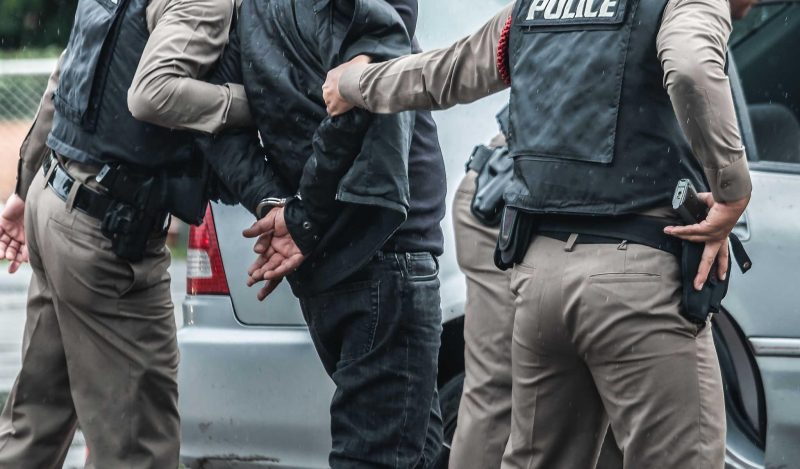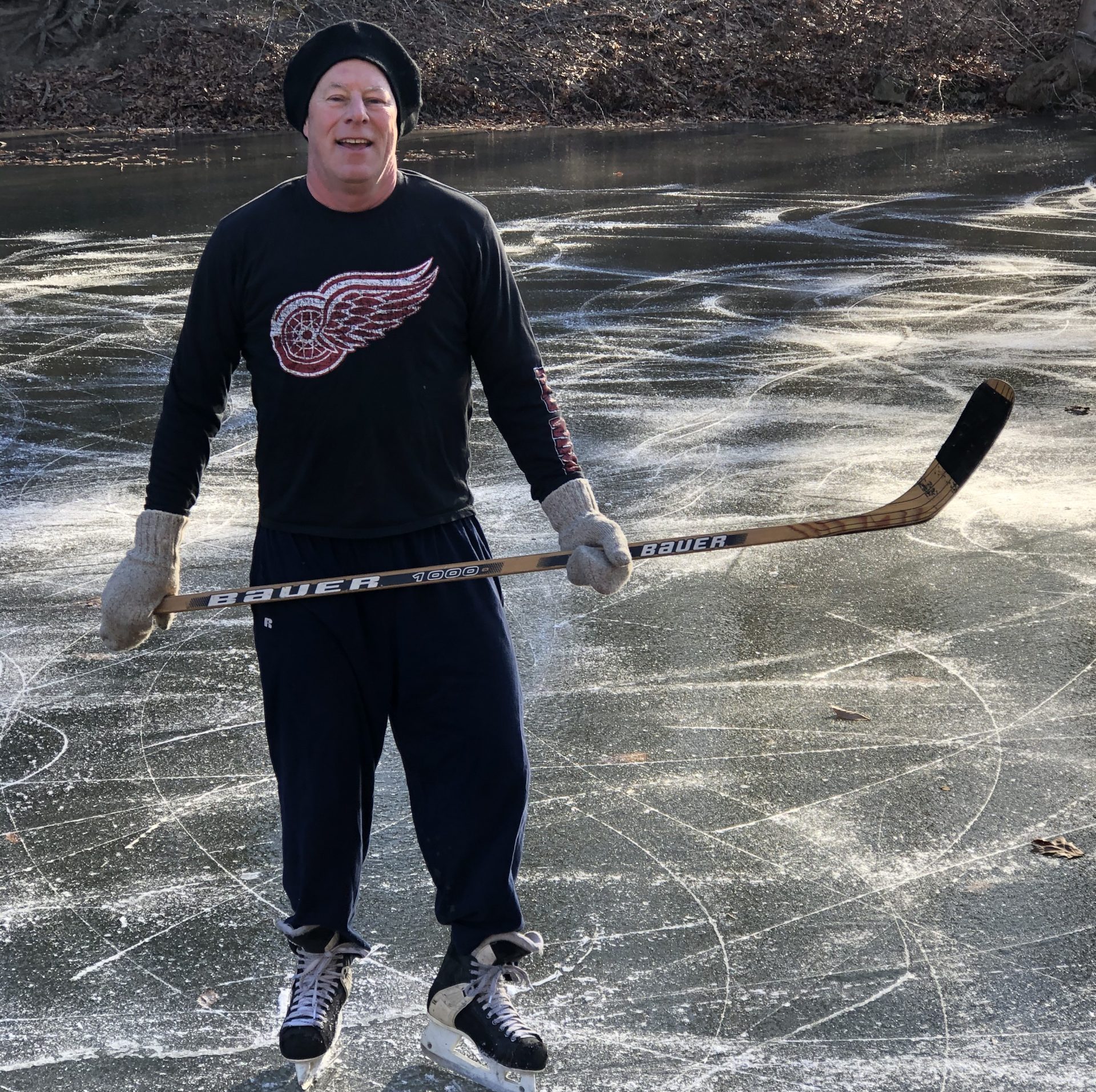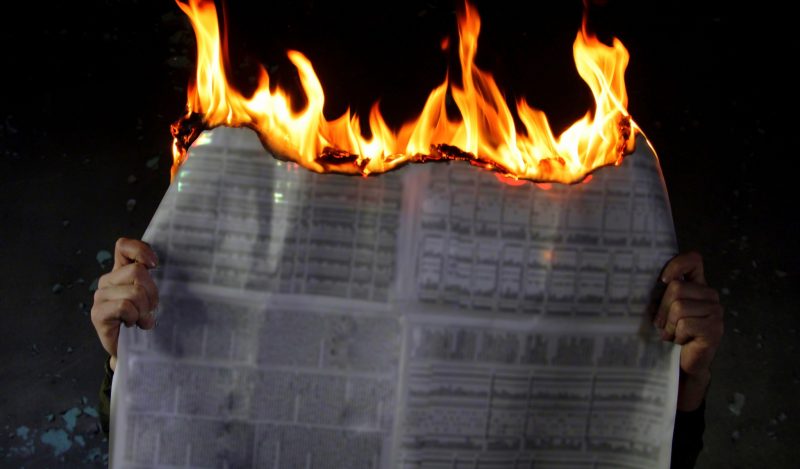In the mid-1980s, I routinely rode a 10-speed between Rutgers Law School in Newark, NJ’s Central Ward and my Kearny apartment two miles away. I often studied in the law school library until 11 PM.
At that hour on one chilly—not cold—late January Friday night, I waited with my bike in front of the school to walk my girlfriend to the NJ Transit Number 76 Hackensack-bound bus on the other side of adjacent Washington Park. She was inside, fetching some books from her locker. As I stood on the sidewalk, three Latino teens, each significantly shorter than I, approached with hoodies suspiciously pulled around most of their faces. They were Proto Maskers before anyone had heard about “droplets.”
Given their attire and that almost no one walked in that part of Newark at those hours and that the Columbus Homes, a multi-building, high-rise, crime-ridden (and since dynamited) housing project was nearby, I readied for a confrontation. I had bought that $185 steel blue Ross with wages from a $4.25/hour bottling factory job. I wasn’t going to hand it over to smallish, skinny youths that I could beat up. Yielding to them would have been below my dignity.
As they reached me, one grabbed the bike’s frame top bar. I tightened my grip with both hands as he tried to pull the bike away from me. The second just stood there. The third one pulled a 10-inch knife out of his jacket’s sleeve. The blade gleamed under the streetlight. Though I shouldn’t have been surprised, the sight of the weapon startled me. Reflexively, I took my right hand off the bike and cocked my fist, ready to start throwing. They silently fled into the dark.
The next night, three kids who met the same description jumped a classmate from behind, put a long knife to his throat and stole his wallet. The third night, they did the same to a professor.
On some nights, I played basketball with Newarkers in Rutgers/Newark’s golden, geodesic dome gym, five blocks from the law school. One warm, spring night, while walking back from the gym to the school to get my books around 10 PM, I saw two sizable, t-shirted, twenty-something African-American males standing thirty yards ahead of me under a streetlight on an otherwise deserted block of Washington Street, just south of where the bike incident had occurred. After conferring with each other, one of the two men crossed the empty street, such that I would have to pass between them to reach the school.
I was disinclined to do that. Thus, by then about twenty yards away from them, I stopped. For five seconds, like a Mutual of Omaha Wild Kingdom episode, predator and prey both stood still and silent, making as much eye contact as was possible by streetlight. Then, without saying a word, they burst directly toward me.
Unsurprised, I pivoted and, fortuitously unladen and still wearing my sneakers and sweats, sprinted away from them. Since they started running before I did, they gained ground right away; I could hear their footsteps no more than ten yards behind me. It felt like playing football had felt, only with higher stakes.
Adrenaline flowing, I continued churning my knees and feet. Within the next ten seconds, the gap between us sounded like it was unchanged. I was 26 and well-conditioned. I was confident that if they couldn’t catch me in the first 100 yards, they wouldn’t be able to catch me at all. They chased me across a diagonal path through most of Washington Park and toward untrafficked Broad St. After about 75 more yards, I had opened a big enough gap on them that their footsteps became fainter. I looked back for the first time and saw them breaking stride, defeated. I yelled at them in the dark: “Too slow! Give up!”
In return, they cursed at me. But the facts spoke for themselves. Intermittently looking over my shoulder, because they continued to jog after me, I jogged around the elegant, tall, dark brown cut-stone phone company building and weaved through backstreets, then across McCarter Highway to the Bridge St. Bridge about a quarter mile away, where I crossed the river and left the city, my pursuers having lost my trail.
Initially, I was disappointed that I hadn’t been able to enter the school to get my books or to ride my bike, also stored there, home. But I soon decided it was better to, as they say about sports tournaments, survive and advance, than it was to study for another couple of hours and that I’d just have to get up earlier the next day and walk to school. Besides, it felt good to outdo people who wanted to, and thought they could, hurt me. I went to bed happy, though unprepared for class. Too bad my Mom couldn’t write me a note explaining why my professors shouldn’t call on me.
A year before, I had also been chased by another urban fellow with a 40-ounce beer bottle that he had pulled from a mid-West Side/Manhattan trash can and smashed to weaponize it after I had taken his face to the sidewalk because he had provoked me in a way that I found unacceptable. That’s a longer story.
Worse stuff has happened to people I knew in places I knew. My next-door neighbor was shot at close range with a high caliber pistol, dead in the head, while delivering bread in Paterson, in the same neighborhood where, and a year later, I had driven a milk truck. I knew and liked another man named James Wells who was beaten to death in 2015 on a stretch of Trenton sidewalk that I had walked across countless times. A close relative was jumped and badly beaten by five Latino youths on a familiar-to-me Fordham Road/Bronx subway platform late one March 2010 night. I’ve had a friend killed in a car wreck, another paralyzed after falling out of a tree he was climbing as a ten-year-old, and another—a landscaper—who had a tree he was cutting fall on, and kill him. I’ve seen a guy I didn’t know get shot 20 yards from me and bleed out on a NYC sidewalk. In July, 1990. I stayed afloat in, and swam out of, a Jersey Shore rip current that carried five other young people to twilight deaths.
I suspect that some of you know other people who’ve been killed or injured in these, or other, ways.
Life can sometimes be dangerous. One’s duration and quality of life depend, at least in part, on good risk assessment. I’ve had some other close urban calls plus some incidents that occurred during long distance hitchhiking and solo wilderness trips because I’ve gone to places that other people avoid. Yet, I’m still here. Despite what some people who know me might say—ironically, most of them were mRNA injectors—I generally assess risk well. I know my capabilities. And maybe I’ve been watched over.
Regardless, assessing risk doesn’t mean avoiding any trace of risk. In general, and especially during the past three years, fear and safetyism have gone way too far. While I’ve been in some predicaments and so have some people I know, these stand out because they’re rare. I’ve been around for over 20,000 days and nights and so have many others. Those who live long enough and spend enough time on foot in low-income settings or who do stuff alone in nature will run into at least some trouble.
During a televised 1980s speech, I heard Jesse Jackson invoke the metaphor that ships aren’t built to stay safe in their harbors. He said that they need to venture out into the ocean, where the wind and water can be turbulent and perilous. A huge, inspired crowd roared its approval. Yet, during the Scamdemic, many who cheered his message undoubtedly were too scared to even venture out to buy groceries. I guess one shouldn’t take political speeches, or their audiences, too seriously.
But The Rev—who I also saw/heard speak up-close in Newark in 1984— was right: to live fully and constructively among others, humans must incur some risk. Some people must do dangerous work, like ghetto deliveries, tree cutting or roofing, etc.—I have—just to pay their bills. And vital people—especially kids—must climb trees, ride bikes and swim, et al. People who shackle themselves via extreme safetyism are, like Papillon was found to be during his Dark Nightmare of the Soul, guilty of wasting their lives. Those who supported confining other people based on a respiratory virus deserve disregard and disdain.
Taking appropriate risks yields benefits. By going, on foot, to places where most others don’t, especially in Latin American and US cities, including Newark, Trenton and New Brunswick, I’ve met warm, insightful, talented and fun people. Similarly, while being out alone in the woods or ocean, I’ve seen or experienced some awesome stuff. By playing sports, I’ve also spent time with many people whom I wouldn’t otherwise have met. While doing so, I’ve broken some bones and sustained some concussions. But I’m still here at 65, fully mobile and pain and med-free. I’m healthy in large part because I’ve been active and taken some chances and some lumps, instead of being passive, fearful or excessively cautious.
Sometimes risk assessment entails being willing to defy others’ attempts to intimidate you. Most people, like some bike thieves, make threats that they’re not willing or able to back up. One must recognize when this is occurring. The last three years have shown how far people and governments will go and wreck things for others if those they threaten don’t say “No” to their bullshit. If more people had stood their ground, the “leaders” would have caved and been deservedly humiliated.
My experiences, plus some knowledge of Biology and basic data and a basic understanding of statistics, are why I opposed all of the “Covid mitigation” from Day 1. People must assume some risk and stand up for themselves or lead a boring, subservient life. Those who bought into Covid safetyism disregarded the many human costs of confining people in their homes and closing meeting places. Most especially, the Covid cult ignored the irreplaceable opportunities and experiences that their fear and mandated mitigation stole from many other people.
Aside from these opportunity costs, Covophobia has imposed huge economic costs. The trillions spent on worthless Covid mitigation have severely damaged America’s economy. We’re experiencing high inflation, bank failures and a shift away from the dollar as the world’s dominant currency. Many predict a major recession. Major recessions kill many people. Avoiding some trouble can cause deeper trouble.
Over the past three years, I never feared my fellow citizens’ germs. Exchanging microbes is part of the human experience and bargain. Some people might infect me. I might, in turn, infect others. It’s how life is. People used to understand this.
Nearly universal survival is also how life is. People should have seen that coronaviruses present only microscopic risk. Even using the bogus official figures, the viruses of the past three years kill only about one in 5,000 infected people under 65; the one outlier was unwell to begin with. The survival rates for those between 65 and 80 were not much worse. Nearly all of the 80-plus cohort also survived. The notion that coronaviruses present universal danger has been a massive government/media lie swallowed by gullible people who lead pathetically sheltered lives.
People should have eaten well and exercised outside and understood that immune systems are highly effective. They should also have seen how many life experiences they were giving up—or making others give up—by foolishly supporting quackish “mitigation” measures. Hiding in your home or wearing a mask were never going to crush a virus.
Nor were mRNA shots necessary, much less effective or safe. And though others threatened to take livelihoods from mRNA rejectors, those subjected to jab mandates should have refused injection and dared their employers to find equally skilled and reliable replacements. In the past 50 years, many discharged employees who were less productive and less deserving than are the non-jabbers have been reinstated with back pay in other contexts.
During the past three years, the government stole society’s bike. And its dignity. Because foolish, fearful people let them.
Republished from Substack
Published under a Creative Commons Attribution 4.0 International License
For reprints, please set the canonical link back to the original Brownstone Institute Article and Author.









